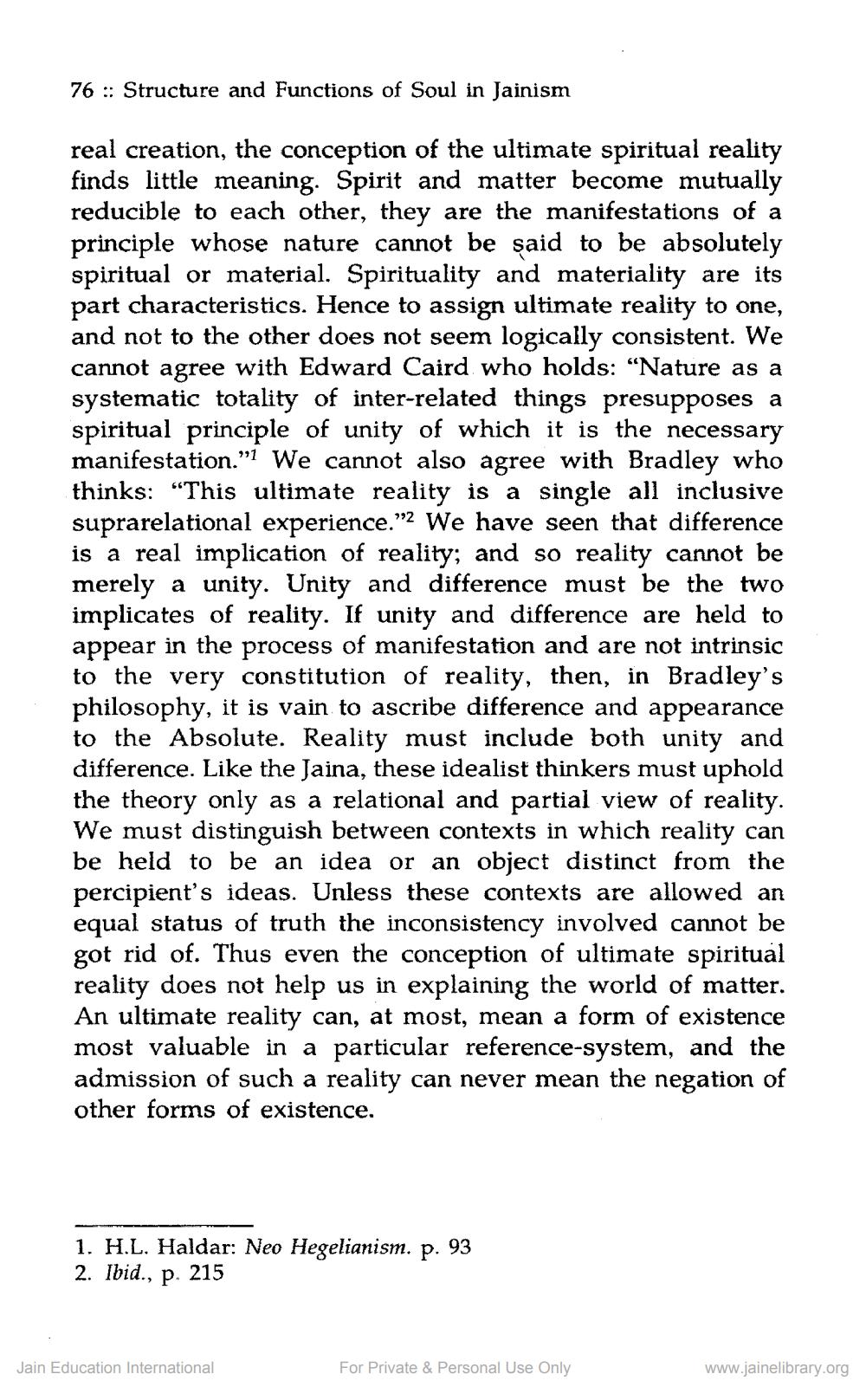________________
76 :: Structure and Functions of Soul in Jainism
real creation, the conception of the ultimate spiritual reality finds little meaning. Spirit and matter become mutually reducible to each other, they are the manifestations of a principle whose nature cannot be said to be absolutely spiritual or material. Spirituality and materiality are its part characteristics. Hence to assign ultimate reality to one, and not to the other does not seem logically consistent. We cannot agree with Edward Caird who holds: “Nature as a systematic totality of inter-related things presupposes a spiritual principle of unity of which it is the necessary manifestation.”l We cannot also agree with Bradley who thinks: “This ultimate reality is a single all inclusive suprarelational experience."? We have seen that difference is a real implication of reality; and so reality cannot be merely a unity. Unity and difference must be the two implicates of reality. If unity and difference are held to appear in the process of manifestation and are not intrinsic to the very constitution of reality, then, in Bradley's philosophy, it is vain to ascribe difference and appearance to the Absolute. Reality must include both unity and difference. Like the Taina, these idealist thinkers must uphold the theory only as a relational and partial view of reality. We must distinguish between contexts in which reality can be held to be an idea or an object distinct from the percipient's ideas. Unless these contexts are allowed an equal status of truth the inconsistency involved cannot be got rid of. Thus even the conception of ultimate spiritual reality does not help us in explaining the world of matter. An ultimate reality can, at most, mean a form of existence most valuable in a particular reference-system, and the admission of such a reality can never mean the negation of other forms of existence.
1. H.L. Haldar: Neo Hegelianism. p. 93 2. Ibid., p. 215
Jain Education International
For Private & Personal Use Only
www.jainelibrary.org




